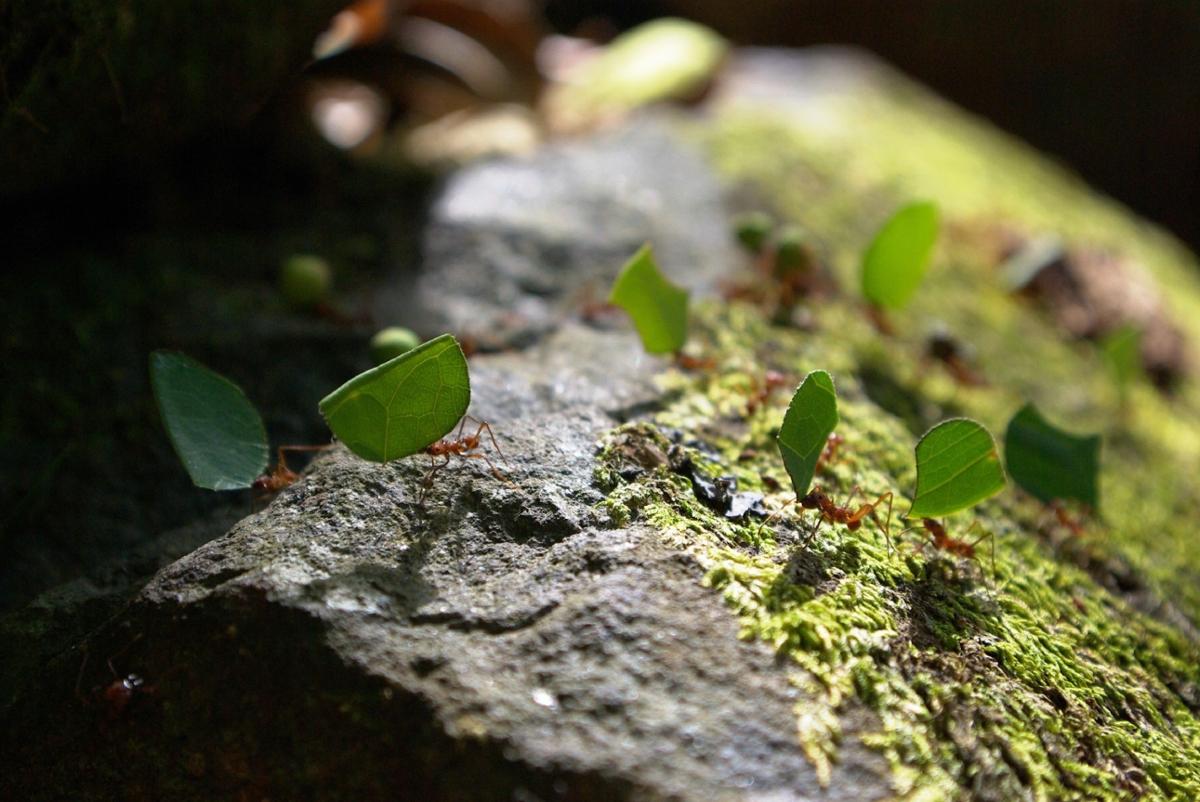If you could choose between two superpowers—super strength or the ability to fly— which would you pick? Though ants never got to choose, they might have given up one for the other.
Ants are famous for their ability to lift and move objects many times their own weight. Some scientists think this may be connected to the fact that they evolved from flying insects, but developed the ability of a single genome to produce either a winged or wingless individual. Wing muscles can take up over 50% of an insect’s thorax. If an ant develops into a wingless worker ant, other muscles can reorganize and expand into that space. Using advanced x-ray technology, scientists were able to compare the thoraxes of wingless worker ants and flying queens in several species of ants. They found that the loss of flight likely allowed three muscle groups to expand in volume in worker ants, changed the geometry of their neck muscles, and altered the way their muscles were attached, all of which made ants stronger.
The researchers also compared the bodies of other insects, and found that loss of flight didn’t always lead to stronger thoraxes. Wingless wasps, for example, evolved differently after losing their wings. This may be because wasps are solitary insects that eat food when they find it, while ants bring it back to the nest. The ability to carry large objects over long distances isn’t as helpful to wasps as it is to an ant colony. Still, with losing one superpower and losing out on another, it’s hard not to think wasps got the short end of the stick.










